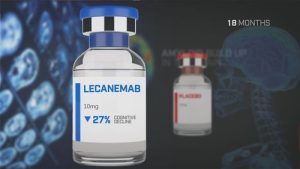Doctor On Call, or DOC for short, is a brand new series brought to you by Medical Channel Asia. This series aims to bring doctors and specialists from various fields to give you an introduction to common health and medical topics that you and the Asian population are interested in. In our 3rd DOC, held on 3 Jul (Saturday), from 2pm to 3pm (GMT+8), we have Dr Felix Li from Dr Felix Li Medical Aesthetics Clinic, to talk to us about Medical Aesthetics.
In this first ever ‘Ask Me Anything’ style of the DOC webinar series, we have Dr Felix Li answer all questions pertaining to medical aesthetics that came in LIVE during our actual event. For Part 1 of the forum, Dr Felix Li will be answering questions that were collated from the registration process. In Part 2, Dr Felix answers some of the questions posted LIVE by our audience! Read below to find out what more about medical aesthetics!
Pre-collated questions during registration process
Q1: What kind of botox is used for the armpit?
Dr Felix: In Singapore, there are 3 types of botox (Botulinum toxin) that we use. Allergan Botox, Dysport and Xeomin. In our clinic, we use Allergan Botox, but all 3 brands are good to use.
The issue for the botox for the armpits is that: it is a fulfilling but rather frustrating treatment. Fulfilling because for patients troubled by hyperhidrosis (i.e. excessive sweating) in armpits or palms, the use of botox is an immediate cure. The moment we do the treatment, patient can feel the sweat drying up significantly and helps with quality of life improvements.
However, it can be frustrated because of the following reasons:
- Effects are not permanent
- When you inject in large area like the armpits, it can be quite painful (multiple injections)
- Expensive (each treatment will use almost 1 whole unit of botox)
Q2: Why do some people not get good results after using lasers for treating pigmentation?
Dr Felix: The most common reason for not getting results after lasers is usually due to the patient’s expectations. Before doing the laser, you need to speak to your doctor to understand what exactly is the pigmentation you are referring to, as there are multiple types of pigmentations.
Some types of pigmentation can be treated with one session (e.g. freckles), some require series of short treatments (e.g. sunspots), while some of them will never be eliminated (e.g. melasma). The aim for those that cannot be eliminated is always at controlling and regulation. In summary, if you have the wrong expectations, you may not be satisfied with the treatment. For example, if you expect melasma to go away after one treatment (just like for freckles), it is not going to happen and you are likely to be disappointed.
Another reason could be that the wrong laser is being used to treat the indication. Not every laser and pigmentation is the same. Not every laser can treat every type of pigmentation. Some lasers are ablative (i.e. cutting), some are non-ablative (which are more common in the treatment of pigmentations). Among the non-ablative options, we use different wavelengths to target the different chromophores in the skin. Some target melanin (black pigment), some target haemoglobin (blood), some target water under the skin.
What I suggest to to find a professional doctor to understand the type of pigmentation you have and find the treatment options available and most logical and sensible for your type of pigmentation. If you want it to be gone fast, then you will need to undergo a more aggressive type of treatment with more downtime. If you are aiming at controlling your skin and complexion over time, then you will be looking at a different type of laser treatment.
Q3: After using a fractional laser, what, when and for how long should we apply to make it heal and achieve better results?
Dr Felix: Fractional lasers generally are used to treat acne scars, skin rejuvenation and open pores. Traditional fractional lasers like CO2 lasers cut a series in your skin, leaving behind intact skin in between. That promotes the body to repair the area that was damaged. This causes resurfacing of the skin and improve the appearance of the scars and open pores, and also helps with regenerating the skin.
Problem with fractional lasers is that we are ultimately cutting the skin. We want to skin to heal well, and avoid complication called post inflammatory hyperpigmentation (PIH), especially in Asian patients, darker-skinned patients, and patients who go under the strong sun usually.
I am not a big fan of using ablative lasers, unless the condition really calls for it (like deep acne scarring). But let’s say you have done ablative laser (red skin, dry and sensitive), you may want to avoid sun exposure for the first few days up to a week after treatment. What you want to avoid is prolonged sun exposure (e.g. going to the park and beach for the whole day). In terms of skin care, the doctor would have given a post-laser treatment regime, differing from each clinic. The goals:
- To hydrate the skin
- To protect from the sun
When we cut the skin the protective function is gone, so we want to keep it intact. Hence we use moisture and sunblock round the clock.
One interesting thing about fractional lasers is that you may want to pre-treat the skin if you have experienced PIH before. Some guys may not use skin care all the time, hence you may want to put some vitamin C serum or other anti-oxidant serum on your skin about a week before your laser treatment. This can reduce the risk of PIH from the treatment.
Generally we use picosecond lasers in our clinic for skin rejuvenation. Mainly because for our Asian skin, we have more pigment, as compared to Caucasian patients. It is unlike to cause problems when we use ablative laser treatments multiple times in Caucasian patients. But PIH is a real risk in Asian patients (skin can get more dry, sensitive, irritated more easily over time). Picosecond lasers generate little damages under the skin, which still promotes the same result such as collagen formation, but still leaves the skin intact and hence lower risk of PIH as compared to CO2 lasers.
In summary:
- Moisturiser
- Sunblock
- Pre-treatment with vitamin C
- Lifestyle advice: sun avoidance, hydration
Q4: Side effects of injectables (e.g. Botox and Profhilo)
Dr Felix: There are 2 different types of side effects. (1) Due to injection and (2) Due to the product itself.
There are 2 types, down-time vs side effects. You should expect to have down-time, although there are many ways to reduce it to minimal. Side effects are things you should NOT expect to get. It could be something that went wrong inadvertently.
For down-time: e.g. you get injection-site pain, where the site gets sore, irritated and swelling for a couple of hours. For very surface injections such as Botox around the eyes or Profhilo, you may get bumps on the skin. Depending on the depth of injection, some of this bumps are intentional and leaves the product in a place ideal for absorption. These bumps usually take about a couple of days to resolve.
Bruising may occur very infrequently, and may last for about a week. In our clinic, we have lasers to remove bruise almost immediately. Even if you don’t use lasers, you can use certain cream to break up the components of the bruise and it will go away in a week. If it is due to sharp needle injury, the bruise will usually be very small and can be covered using concealer. One advice may to postpone the injection if you are having important events going on in the next couple of days to prevent the bruising to be obvious.
In terms of risks, it really depends on what you are injecting. Basically botox affects the muscle and relaxes it. If the injection is too deep, it will weaken and soften the muscles that it is not supposed to take effect on. For fillers, the greatest problem is to have it injected into blood vessels. If the blood vessel is too near to the skin, it may cause death of the skin tissues and the blood vessels in that area. Major complication include injecting the product into major blood vessels and travelling to the eye, causing blindness. This can be prevented by not injecting into areas with these blood vessels.
Important to ask your doctor the risk profiles that are involved and be comfortable with them, especially if you are injecting fillers into areas with blood vessels leading towards the eye.
In summary, main issues with Profhilo, Rejuran, Skin Boosters:
- Skin necrosis (when injected into small blood vessels)
- Interaction with other products leading to lumps (granulomas)
- Blindness (if injected into major blood vessels and travel to eyes)
- Injection site reaction (bruise, soreness)
Q5: How do I slow down the development / progression of nasolabial lines?
Dr Felix: Patients nowadays are getting more well educated about these treatments available, and instead of asking how to remove or improve, this is a great question on how to slow down the development.
Nasolabial folds are a normal part of human ageing phase. You don’t want to remove the nasolabial folds, as it will make the face and expressions look unnatural and strange. But people still get concerned with these folds because as we age, these folds get deeper and people see it as a sign of change and ageing (i.e. looking saggy and tired because of the progression). Here is where we have to make a clear distinction. Deepening nasolabial folds is NOT the cause of ageing. It is the symptom of ageing.
For example, if you have a bacteria infection of the lungs, you will have a cough. The cough is not the problem, but is merely the symptom of the problem. When you clear the infection with antibiotics, it will remove the cough as well. In the same way, deepening of the nasolabial fold is a symptom, which tells us that our face is changing with age.
The actual question is: is it possible to slow down the rate our faces change with age? The answer is YES. You may notice that when you are a teenager, your faces don’t change as much. However in your 20s and 30s, your face will start to change by a little bit. By the time you reach 40s and 50s, your face changes a lot. These changes can lead to symptoms that make you look tired, sad, angry or saggy, and not the way you want to look.
Why does your face change faster every year? This is because our faces are held up by a series of ligament and tissues that supports it. As this support gets weaker, you will notice that the change gets faster. A lot of times people want to use fillers to fill up the folds and holes, when they are just treating the symptoms of ageing but not the cause. This make the looks to be unnatural, and the looks will still continue to change. When the fillers are gone, the problems become worse.
There is a way to do fillers: not restoring volume but actually restoring the support, by repositioning the ligaments to support the tissues of the face. This directly treats the cause of the ageing. When done in this way, the volume restoration is a by-product of the ligaments moving the volume to the right places. The better positioning also helps to slow down the ageing on the face.
In summary:
- Deepening nasolabial lines is a symptom of ageing
- Instead of treating symptoms, you treat the cause, as you will treat the symptom along the way, and helping your face age better and more naturally
Q6: Are fillers ‘permanent residents’ in the subcutaneous layer?
Dr Felix: Basically, most of the modern hyaluronic acid (HA) fillers are not permanent. After a prescribed amount of time, the body will resorb the filler and it will be gone.
However, there are certain types of fillers that are meant to be more permanent. But these are being used less often nowadays.
An interesting thing about what we discussed previously, when ligaments sags with age, the fats drop. If we are filling the hollow with the fillers, and the fillers get resorbed, the effects are gone and we need to fill again. But if there is a way for us to restore the ligaments, and the hollow is being filled with by your own’s body fats, the results can actually last longer when the filler is gone.
Especially with COVID-19 lockdowns, a lot of appointments for fillers get postponed. Fillers usually last for 12-18 months. After 18 months, the patient usually has no fillers left in the skin. But when we did a before-after comparison, they still look better as compared to before the fillers were injected. Hence, when the fillers are injected well, it actually helps the face age better.
What’s next in store?
- See Part 2 for the LIVE Question and Answer (Q&A) segment with Dr Felix Li!
- See the full video on both our Medical Channel Asia’s Facebook page and our Medical Channel Asia’s YouTube channel:
- If you have missed our DOC #1 and DOC #2, visit our Medical Channel Asia’s YouTube page, or you can also read the articles on our MCA website!










